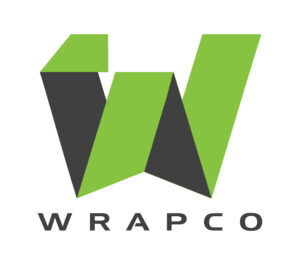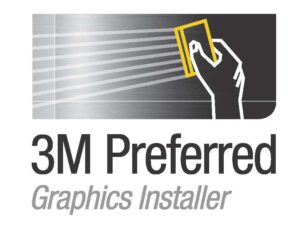
When it comes to Paint Protection Film (PPF) longevity, understanding the key factors at play is vital for maximizing the lifespan of your vehicle’s protective coating. From environmental influences to proper care routines, various elements can impact how long your PPF will last. By grasping these essential aspects, you can make informed decisions that will safeguard your vehicle’s appearance and value over time.
Key Takeaways
- Environmental factors influence PPF lifespan.
- Proper maintenance is crucial for durability.
- Driving habits affect PPF longevity.
- Quality installation impacts the film’s durability.
- Exposure to pollutants can accelerate wear.
Benefits of PPF Longevity
When considering the benefits of Paint Protection Film (PPF) longevity, WrapCo’s advanced technology provides unmatched durability and protection for your vehicle’s paint. The cost-effectiveness of PPF longevity becomes evident when you take into account the potential expenses of repainting or fixing chipped paint caused by road debris or environmental factors. By investing in PPF with exceptional durability, you not only save money in the long run but also secure that your vehicle maintains its sleek appearance for years to come.
Furthermore, the time savings associated with PPF longevity are significant. Instead of frequent touch-ups and detailing to upkeep your vehicle’s exterior, PPF offers a hassle-free solution. With its protective benefits, such as resistance to scratches, stains, and fading, you can spend less time worrying about the appearance of your car and more time enjoying the drive.
The durability of WrapCo’s PPF technology ensures that your vehicle’s paint is shielded from the daily wear and tear that comes with regular use. Whether it’s the sun’s UV rays, harsh weather conditions, or minor abrasions, the protective film acts as a barrier, preserving your car’s finish in pristine condition. Ultimately, the combination of cost-effectiveness, time savings, and superior protection benefits makes investing in PPF longevity a wise choice for any car owner looking to maintain the value and aesthetics of their vehicle.
Factors Affecting PPF Lifespan
To maximize the longevity of WrapCo‘s Paint Protection Film (PPF), it’s important to understand the key factors that can influence the lifespan of this advanced protective technology.
The following factors play an important role in determining how long your PPF will last:
- Environmental Factors: The environment in which your vehicle operates can greatly impact the lifespan of the PPF. Exposure to harsh weather conditions, UV rays, and pollutants can accelerate wear and tear on the film.
- Maintenance: Proper and regular maintenance of the PPF is essential for ensuring its durability. Cleaning the film correctly and using recommended products can help preserve its protective properties.
- Driving Habits: Your driving habits also affect how long the PPF will last. Aggressive driving, high speeds, and frequent off-road adventures can put additional stress on the film, reducing its lifespan.
- Installer Quality: The skill and expertise of the installer play an important role in the longevity of the PPF. A poorly installed film is more likely to peel, bubble, or discolor prematurely, impacting its effectiveness in protecting your vehicle’s paint.
Common PPF Longevity Myths
Misconceptions surrounding the longevity of Paint Protection Film (PPF) often lead to common myths that can misinform vehicle owners.
One prevalent myth is that PPF installation is a permanent solution. While PPF is durable, it isn’t a lifetime product. Over time, the film may wear out due to exposure to environmental elements, frequent washing, or physical abrasions. To maintain ideal protection, periodic inspection and potential replacement are necessary.
Another misconception is that PPF removal is a simple DIY task. While some minor damages can be repaired by professionals, attempting to remove PPF without proper tools and expertise can result in damage to the vehicle’s paint surface. Improper removal techniques may lead to paint peeling or scratches, ultimately costing more to repair than having the film removed professionally.
Understanding these common myths surrounding PPF longevity can help you make informed decisions about your vehicle’s protection.
Remember that while PPF offers excellent safeguarding against scratches and rock chips, it isn’t indestructible. Proper care, regular maintenance, and professional assistance for installation and removal are essential for maximizing the lifespan of your PPF.
How to Extend PPF Lifespan
Extending the lifespan of Paint Protection Film (PPF) requires diligent maintenance and proactive care strategies. To guarantee your PPF lasts as long as possible, consider the following protective measures and preservation techniques:
- Regular Cleaning: Clean your PPF regularly using a gentle car wash soap and a microfiber cloth to remove dirt, grime, and contaminants that can degrade the film over time.
- Avoid Harsh Chemicals: Refrain from using harsh chemicals or abrasive materials when cleaning your PPF, as they can cause damage and reduce its longevity.
- Use Paint Sealants: Applying paint sealants or ceramic coatings on top of the PPF can provide additional durability enhancements and protection against UV rays, oxidation, and environmental pollutants.
- Avoid High Pressure: When washing your vehicle, avoid using high-pressure washers directly on the PPF, as excessive pressure can lead to lifting or peeling of the film edges.

Signs of PPF Replacement
When contemplating the longevity of your Paint Protection Film (PPF), it’s important to be mindful of the telltale signs that indicate the need for replacement. One key indicator is the condition of the film edges. Over time, the edges may start to lift or peel, exposing the underlying paint to potential damage. If you notice this happening, it might be time to think about replacing the PPF to maintain excellent protection.
Another sign to watch out for is the presence of yellowing or discoloration on the film surface. This could be a result of prolonged exposure to sunlight and other environmental factors. Not only does this affect the aesthetic appeal of your vehicle, but it also signifies a decrease in the protective capabilities of the film. In such cases, replacing the PPF can help restore both the look and functionality of the protection.
Furthermore, if you notice any bubbling or wrinkling on the film, it’s a clear indication that the PPF is no longer adhering properly to the surface. This can happen due to various reasons, including errors during the installation process. In such instances, considering a replacement can make sure that your vehicle receives the full benefits of paint protection.
When evaluating the need for PPF replacement, it’s also important to take into account the cost comparison between replacing the film and potential damage to the vehicle’s paintwork. While the upfront cost of replacement may seem significant, it could ultimately save you money by preventing costly paint repairs in the future.
Maintenance Tips for PPF
To guarantee the longevity of your PPF, it’s crucial to clean it properly using recommended methods and products. Avoid using harsh chemicals that can damage the film and compromise its protective properties.
Additionally, a regular inspection schedule should be established to catch any issues early and address them promptly.
Cleaning PPF Properly
Properly cleaning your Paint Protection Film (PPF) is crucial to maintaining its longevity and protecting your vehicle’s paint surface. To guarantee your PPF stays in top condition, follow these cleaning techniques:
- Use a pH-neutral car wash soap: Opt for a mild, pH-balanced soap specifically designed for automotive surfaces to safeguard against damage to the PPF.
- Wash your PPF by hand: Handwashing is gentler on the film than automated car washes, reducing the risk of any lifting or peeling.
- Avoid abrasive materials: Stick to soft microfiber cloths or mitts to prevent scratching the PPF during cleaning.
- Rinse thoroughly: After washing, make sure to rinse the PPF completely to eliminate all soap residue, which can cause streaking or cloudiness.
Avoiding Harsh Chemicals
Maintaining the longevity of your Paint Protection Film (PPF) also involves being mindful of avoiding harsh chemicals that can deteriorate the film’s protective properties over time. To guarantee the chemical durability of your PPF, it’s essential to follow specific care instructions provided by the manufacturer, such as using gentle, pH-neutral soaps for cleaning. Harsh chemicals like bleach, ammonia, or abrasive cleaners should be avoided as they can break down the film’s protective layers, reducing its effectiveness.
Additionally, environmental exposure can impact the longevity of your PPF. Extended exposure to elements like UV rays, salt, or pollution can deteriorate the film over time. To combat this, consider using products that offer UV protection to prolong the life of your PPF.
When selecting cleaning products, always check for compatibility with PPF to avoid damaging the film. Certain chemicals present in cleaners can react negatively with the film, leading to discoloration or peeling. By being cautious and choosing products that are safe for PPF, you can maintain its protective qualities and extend its lifespan.
Regular Inspection Schedule
Regularly inspecting your Paint Protection Film (PPF) is crucial for guaranteeing its effectiveness and durability over time. By staying proactive in your PPF maintenance, you can extend its longevity and keep your vehicle looking pristine.
Here are some key points to keep in mind for your inspection routine:
- Check for Damage: Look for any signs of peeling, bubbling, or discoloration on the PPF surface.
- Clean the Film: Regularly clean the PPF with a gentle car wash soap and microfiber cloth to remove dirt and debris.
- Inspect Edges: Pay close attention to the edges of the PPF to ensure they’re properly adhered to the vehicle’s surface.
- Monitor High-Impact Areas: Focus on areas that are more prone to damage, such as the front bumper and hood, and examine them carefully for any wear and tear.
Wrapping Up
To conclude, WrapCo’s expertise in paint protection film promises maximum longevity for your vehicle’s exterior.
When considering the installation process, WrapCo stands out for its meticulous attention to detail. Their skilled PPF installer make certain that the paint protection film is applied flawlessly to your vehicle, leaving no room for imperfections that could compromise its effectiveness. This dedication to a perfect installation process not only enhances the overall look of your vehicle but also ensures that the paint protection film provides the highest level of coverage.
In terms of cost-effectiveness, WrapCo offers competitive pricing for their services. While paint protection film may seem a significant investment initially, the long-term benefits far outweigh the cost. By safeguarding your vehicle’s exterior from scratches, chips, and other forms of damage, the paint protection film helps maintain its resale value and keeps it looking new for years to come.
WrapCo’s commitment to providing quality services at affordable prices makes them a top choice for those looking to protect their vehicle’s exterior without breaking the bank.
Recap
By adhering to the proper care instructions, selecting the right cleaning products, and scheduling regular inspections, you can guarantee that your PPF lasts longer than a superhero’s cape in a windstorm.
Remember, maintaining the longevity of your PPF not only protects your vehicle’s appearance but also preserves its value.
Keep up the good work, and enjoy the long-lasting benefits of a well-maintained Paint Protection Film!

